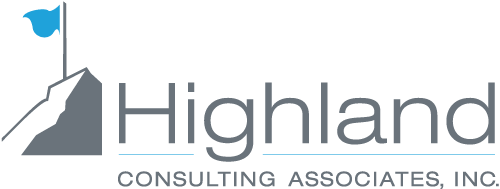Auld Lang Syne: Some Things Remain the Same (including Retirement Plan Committee Best Practices)

photo credit Pixabay
As 2023 ends and a new year begins, in Scotland’s highlands and lowlands you’re likely to hear the familiar “Auld Lang Syne,” a Scottish expression meaning “old long since.” It’s a tribute to times past or a longing for old times. If you’re a plan sponsor fatigued by the pace of change, here’s good news: the role and importance of retirement plan committees isn’t changing. It’s older than disco (if not as ancient as “Auld Lang Syne”).
Since the passage of the Employee Retirement Income Security Act (ERISA) in 1974 and the introduction of the 401(k) in the early 1980s, committees have been the internal governing bodies for both private and public retirement plans. Committees vary in size (most from five to 10 members), representation (different titles and/or functional responsibilities) and composition (criteria for determining who sits on the committee).
Best Practice: Establishment
According to ERISA, if a plan sponsor creates a committee (as a named fiduciary) to oversee the organization’s retirement plan, the owner or board of directors may be relieved of most responsibilities for the plan. Committees are formed for the primary purpose of managing the plan in accordance with ERISA or state guidelines. It’s a broadly accepted best practice for both corporate and public plans to establish a committee.
Best Practice: Structure
Committee roles and responsibilities are usually set out in the Investment Policy Statement (IPS) or committee charter. Members are often organization officers and may include the CFO and representatives from human resources. If company stock is offered as an investment lineup option, an independent fiduciary may be appointed. Representation from the company’s legal team is also common. In any case, broad representation is preferred.
Some organizations have two committees. This is more common with larger organizations. In fact, 40% of plans with 5,000 or more participants have two committees. A two-committee structure allows a division of responsibility and more focused functions. For example, one committee may oversee investment lineup selection and monitoring, while the other attends to service provider oversight. The most important criteria for committee membership are 1.) job/role, 2.) expertise and 3.) willingness to participate and accept fiduciary responsibility. The majority of committees have five or more participants, and more often than not an odd number.
Best Practice: Fiduciary Responsibility and Training
As fiduciaries, committees accept essential responsibilities for monitoring a plan’s operation, its benefits and costs, and for ensuring prudent plan operation and administration. This includes ensuring the reasonableness of plan expenses, and a regular review of investment lineup menus.
Committees also obtain a fidelity bond for the plan, which insures plan participants against losses due to acts of fraud or dishonesty. The bond is separate from fiduciary insurance, which protects committee members if they are sued for claims relating to a breach of their fiduciary duties.
Since the responsibilities of a committee are significant, another best practice is to conduct initial and ongoing fiduciary training for plan committee members. While not specifically required, the matter of training could come up during a Department of Labor (DOL) audit. Training demonstrates fiduciaries’ commitment to serving their purpose and keeping up with legislative requirements. In addition, insurance applications for fiduciary coverage might inquire about training protocols.
The IPS or charter itself and operations outlined therein should be reviewed annually, first to make certain the document is regularly reviewed, followed, and, to provide plan fiduciaries guidance on prudent processes.
Best Practice: Monitoring New Guidelines
ERISA couldn’t anticipate the security risks that might arise in a digital age. But the DOL has become increasingly aware and concerned about these risks. In April 2021, new cybersecurity guidelines and best practices were issued by the DOL. They advised that a sound cybersecurity program should be fully implemented and documented, including “information security policies, procedures, guidelines, and standards to protect the security of the IT infrastructure and data stored on the system.” This cybersecurity program should be documented and shared with the plan recordkeeper as well.
Highland’s Wish for Your New Year
“Auld Lang Syne” invites us to remember the past and look forward to the future. Highland has remained steadfast in our 30-year commitment to ensure plan sponsors adopt committee structures and operations that meet all fiduciary requirements. As you serve your employees’ best interests, we endeavor to serve yours.
If you’d like to review your committee charter, committee training program or ongoing operations, please contact Matt Foster at 440-808-1500.
Highland Consulting Associates, Inc. was founded in 1993 with the conviction that companies and individuals could be better served with integrity, impartiality, and stewardship. Today, Highland is 100% owned by a team of owner-associates galvanized around this promise: As your Investor Advocates®, we are Client First. Every Opportunity. Every Interaction.
Highland Consulting Associates, Inc. is a registered investment adviser. Information presented is for educational purposes only and is not intended to make an offer of solicitation for the sale or purchase of specific securities, investments, or investment strategies. Investments involve risk and unless otherwise stated, are not guaranteed. Be sure to first consult with a qualified financial adviser and/or tax professional before implementing any strategy discussed herein. Past performance is not indicative of future performance.



